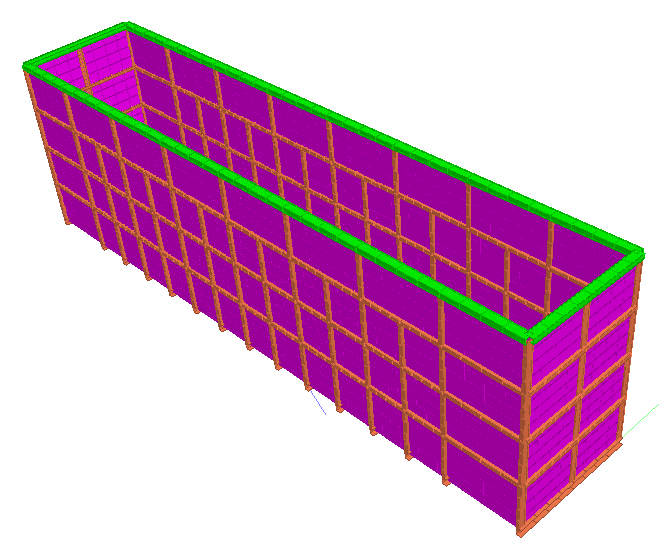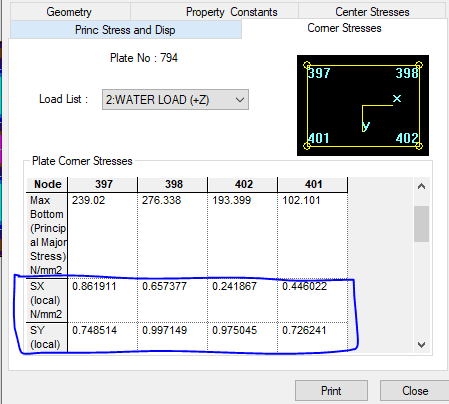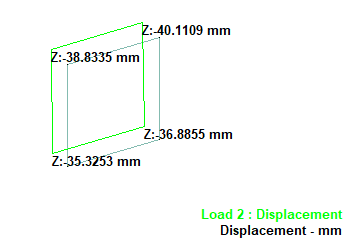Dear All,
I am trying to analyse one Rectangular steel tank (water) having size approx. L X W X H = 8 x 1.5 x 2.2 m. I modelled it in STAAD Pro and applied loads as below:
1. Side walls hydrostatic pressure triangular
2. Base uniform pressure with intensity H x water density.
The tank will be fabricated by MS Plate 3 mm thick and reinforced by MS channels out side. Also inside wall is having a FRP sheet covering of 5 mm.
The tank will be resting on concrete. When I am analysing for the above loads I am getting a lateral deflection of top channel (Bulging) around 70 mm.
My doubt are
1. There is any standard for limiting the bulging (lateral deflection) of the rectangular top open Tank.
2. I modelled the MS plate with channels and I ignored FRP sheet, is this approach is correct?. Do I need to model FRP sheet also?

Please guide.
regards,
Arbu
I am trying to analyse one Rectangular steel tank (water) having size approx. L X W X H = 8 x 1.5 x 2.2 m. I modelled it in STAAD Pro and applied loads as below:
1. Side walls hydrostatic pressure triangular
2. Base uniform pressure with intensity H x water density.
The tank will be fabricated by MS Plate 3 mm thick and reinforced by MS channels out side. Also inside wall is having a FRP sheet covering of 5 mm.
The tank will be resting on concrete. When I am analysing for the above loads I am getting a lateral deflection of top channel (Bulging) around 70 mm.
My doubt are
1. There is any standard for limiting the bulging (lateral deflection) of the rectangular top open Tank.
2. I modelled the MS plate with channels and I ignored FRP sheet, is this approach is correct?. Do I need to model FRP sheet also?

Please guide.
regards,
Arbu


